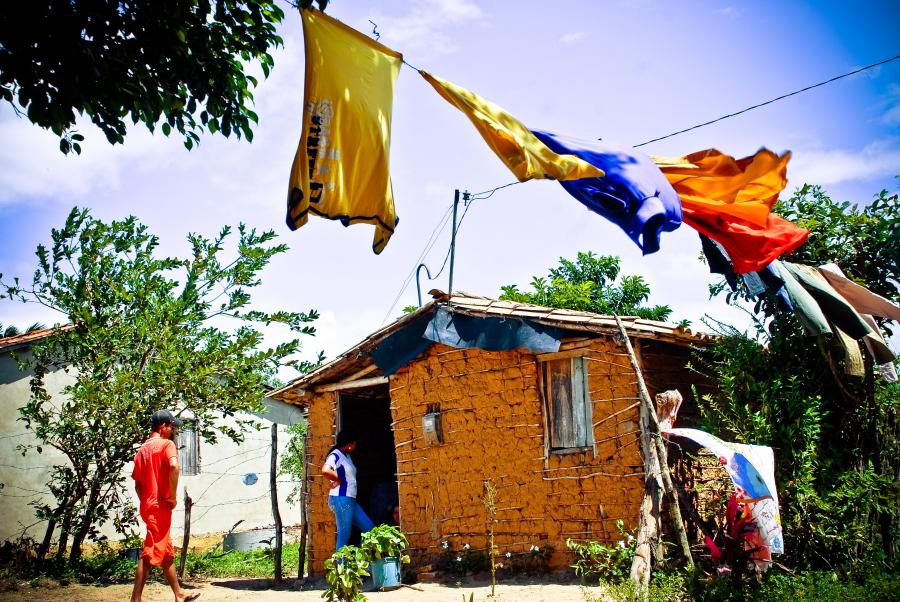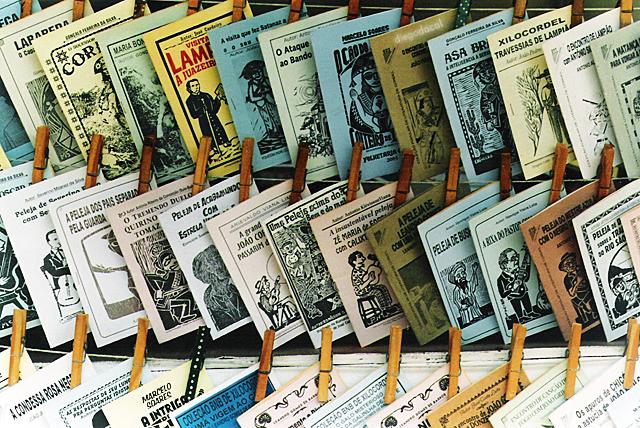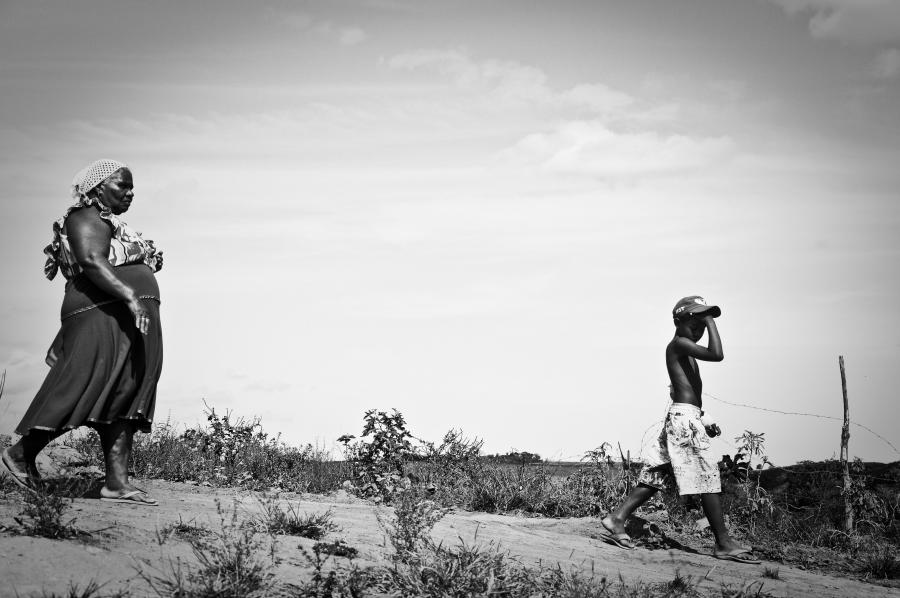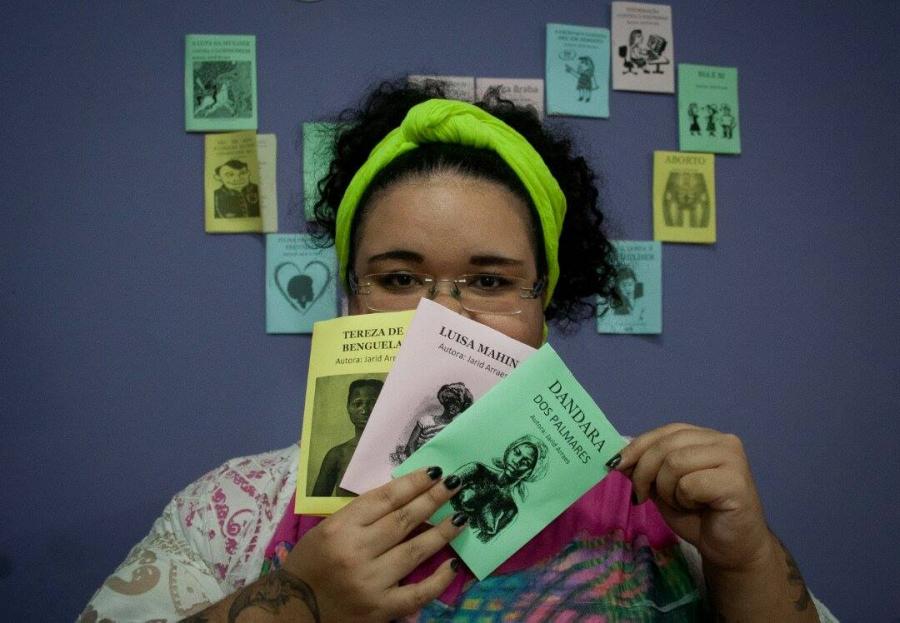
Cordel Literature: the ever-changing Brazilian cultural heritage
Drought, poverty, death, and a bit of sarcastic humor to deal with it all - that is how the history of cordel literature begins. A tradition that reached Brazil through its colonial past, cordel started orally, as an important way to take information to those who did not have access to it. More than 100 years after the first published cordel, the genre is being re-signified by the new generation and new media, but it still faces many challenges, such as being recognized as cultural heritage. Who owns cordel literature and is it in its best interest to be registered as cultural heritage? How can we talk of authenticity, when so much has changed? And most importantly, what are the next steps in the preservation of such an important form of popular expression?
History of cordel literature
Cordel is a genre traditionally from the Northeast of Brazil, more specifically, a region known as ‘sertao nordestino’, which has the smallest rainfall index of the entire country. The sertao is a large piece of land away from the seaside where the most important and developed cities of the area are located. Seven states make up the sertao. The Northeast is the poorest part of Brazil, with some of the states having even 90% of agricultural poverty. It is a region that lives from agriculture and cattle raising, and for that reason, they are extremely dependent on the weather.

Sertao nowadays
The first record of a cordel literature dates back to 1893, but the genre became popularized around the 1930s. At that time, more than half of the population was illiterate and cordel was the way people expressed their sorrows and difficulties. For a part of the population, it was also the only opportunity to get information and hear the news. Cordel started as an oral tradition. It was sung by a type of town troubadour and people used to gather around the cordelista to hear his poetry.
In the 1930s and 1940s, hundreds of cordel were published in paper and read out loud to those who could not read. It functioned mainly as a way of entertainment, socialization, and information. Because people were not properly educated, the language adopted in cordel literature carried not only specific marks of the oral language, but also contained many words written in non-proper Portuguese. Thiswas one of the aspects, along with the fact that it was produced for and by the masses, that helped create a negative stereotype around this genre.
Cordel literature was published in a small flyer with an illustrative picture on the front, usually made by woodcut. It was always very cheap and therefore accessible to all. Even though it was produced for illiterate or uneducated people, cordel still had rhymes and rules, as shown by an excerpt from an interview with cordelista J. Borges, in Viviane Resende’s paper : “In the time when people were illiterate, but they knew the cordel and they knew the rhyme, as soon as a cordel was read and the rhyme broke, the illiterate guy would say: ‘hey, it’s wrong there’” (Resende 2005, my translation).

Cordel literature is a type of narrative poetry, it usually had 32 pages. There were also cordel battles, called ‘pelejas’. Curran (1998) describes cordel literature as having both popular and folkloric characteristics, that is: it is a printed medium with designated authorship, consumed by an expressive number of readers in a wide geographical area, while displaying metrics, themes, and performances of the oral tradition. In addition, it depends on the direct participation of the public as an audience.
However, cordel literature underwent a significant change after the advent and popularization of radio and television. It not only lost its primary function as an informal newspaper, but it also got a whole new audience. After a short period of crisis during the 1960s, cordel literature returned in the 1970s and its change was both in the cordelista and in the audience. Resende (2005) explains that the contemporary cordelistas, as well as the cordel consumers today, have greater access to literate culture. Some professional and educated poets write cordel literature not by profession but for leisure, and are viewed with suspicion by the more conservative cordelistas. Here we can see the first tension in the cordel world, between the traditional cordelistas of the past, that struggled to live of their art, and the new generation, that does it for fun and entertainment.
After cordel literature lost its function as the bearer of news and people became literate, it became commodified as a tourist attraction.
Now, with the internet, cordel literature has moved even farther away from its roots, and the new cordelistas have found different ways to express their art online. An article from Correio Braziliense, a Brazilian newspaper, confirms this new development. They claim that it is on the internet that new generation cordelistas find space to disseminate and maintain the tradition of one of the oldest genres of popular literature (Resende, 2005).
We see here a shift in the way cordel literature is presented. It went from a popular poetry produced in small flyers to a genre disseminated online. The debate to whether or not this can be seen as genuine cordel, since it is not produced in the same traditional format, is the same conflict we see between the old and new generations of cordel. The traditional cordelistas did not (and maybe still do not) have access to the internet, but the new educated generation that is taking over cordel does.
Even though there are very prominent and significant examples of the female contribution to cordel literature, they are still not recognized and legitimized.
But cordel literature can still be found in most north-astern cities and it has become an important part of tourism in the area. Cordel migrated from north-eastern markets and fairs to tourist goods stores and airports and is sold by merchants, which eliminates the direct contact of the cordelista with their audience (Resende, 2005). What we can see is that, after cordel literature lost its function as the bearer of news and people became literate, cordel became commodified as a tourist attraction. We can identify two distinct types of cordel production nowadays: the one being produced for tourists and the other being produced online. The latter, as we will see later, is being appropriated by groups that did not use to have a place in the cordel production.
Women in cordel literature
Throughout the history of cordel literature, little is said about the participation of women in it. Before the 1970s and 80s, when cordel had its big turn, women hardly ever published any cordel and, if they did, it was mostly using male pseudonyms. This is already problematic since cordel was a genre dedicated to the masses, made by them and produced by illiterate people. Therefore, there is no educational or institutional reason that would justify the exclusion of women, because no one had access to education anyway. Therefore, even though it might be seen as a popular and accessible genre, cordel literature carried all the marks of the patriarchal division of society.

Santos (2006) explains that although women coexisted in this universe - as the daughter, wife, or sister of cordelistas or even as poets - they were not given visibility in the patriarchal society. This implies that the trajectory of cordel literature was centered on the man. It was the male poet that went to the fairs and stages, while women could not operate in this scenario. Women's erasure in this cultural context has prevented many women who might have wished to sing or write, to manifest their talents.
The only known female cordelista before the 1970s was Maria das Neves Batista Pimentel, who published all her poetry under her husband’s name. This makes for a complicated situation, as we are not sure whether all the poetry written under that pen name can be attributed to her. Female representation in cordel literature was also somewhat problematic. These female artists were either described as the moral examples of conduct, the quiet respectable wife, or as prostitutes and women of loose moral. Carvalho and Oliveira (2016) posit that in the view of the cordelistas, the woman could only play two specific roles in society, based on their conduct: Virgin Mary or Magdalene / Delilah. Women were also sometimes described as a burden to their husbands. Any woman that published cordel literature at that time, especially under a pseudonym, could not stray away from this representation, or they would risk being uncovered or delegitimized as artists.
Only in the 1970s, women conquered a space in cordel literature, not only reinforcing the male point of view, but writing about social and political issues of the country, including speaking up about the real condition of women in society. They also began to express their point of view on several subjects, something only men could do at this point (Queiroz, 2006). This female authorship would also institute other forms, other contents, other autonomies. Another tradition is created, themes like feminism, ecology, women's health, and homoeroticism start appearing in cordel literature. Women in the cordel universe appropriate the territory of the cordel and establish a re-signification of this genre (Santos, 2006). Two contemporary female cordelistas, with very different approaches to the art of cordel, are excellent examples to discuss the direction cordel literature is taking today, Salete Maria da Silva and Jarid Arraes.
New generation of female cordelistas
Salete Maria was born in 1970. Her grandfather, Zé Alexandre, was a published poet and cordelista. Her grandmother, Maria José, was also a poet, but her art was never published. Salete would hear her illiterate and blind grandmother recite her poems to her in her childhood. Today, Salete works as a professor in the Federal University of Bahia and has a doctorate degree in Interdisciplinary Studies on Women, Gender, and Feminisms. She creates her verses inspired by the social minorities, using as characters women, black people, and homosexuals. She portrays the role women have in society nowadays, including the violence and sexual harassment they suffer. Her cordel literature incorporates, therefore, the voices marginalized by society (Queiroz, 2006).
Salete publishes her cordel in her blog, named ‘cordelirando’, and some of her productions have received prizes given by the Cultural Foundation of the State of Bahia. Her work is used in courses, lectures, debates, and has also been the object of dissertations and doctoral theses. According to her blog, Salete made a great revolution in cordel literature, being the greatest female reference in this field, to which she dedicates herself body and soul.
Another important figure in the new generation of cordel literature is the 27-year-old writer, Jarid Arraes. She learned cordel from her father and grandfather. In an interview in January last year, she explained that she now lives only by the profit made by cordel literature. “[Cordel] is my main job, and I feel very privileged because I reach a large audience, that has developed love for cordel literature. I think that in this aspect I just have to celebrate and give thanks, because cordel is the best thing in my life” (AzMina, 2017, my translation).
Jarid 's production deals with issues similar to Salete’s. She talks about feminism, female empowerment, Human Rights, and racism. However, the biggest difference between her and Salete is that Jarid sells her work, instead of publishing it online, and manages to make a living out of it. She usually publishes independently, without a publishing company, because, according to her, some companies want to take advantage of her art. In 2017, she had more than 60 published cordels and was already planning on some more, she sells them on her own website.

Jarid Arraes and her cordel
Jarid complains about the underrepresentation of women in cordel literature, even nowadays. “I observe how the cordel publishing market in Brazil is and that disappoints and irritates me. An example of this is how men continue to get more prominence and speak by the cordel as if they were the exclusive representatives of this type of literature” (AzMina, 2017, my translation).
Jarid’s complaint is in line with what we can see in the Brazilian Academy of Cordel’s website. Even though there are very prominent and significant examples of the female contribution to cordel literature, they are still not recognized and legitimized. On the website, they have a page that lists 27 of the biggest cordelistas of all times, some of them that still write - they are all men. Also, from the 40 chairs in the Academy, only 3 are occupied by women.
Cordel literature as cultural heritage
What we can gather from these facts is that there is a noticeable ‘battle’ in the field of cordel literature between the legitimate production, mainly made by men and with themes that talk mostly about the struggles of life in sertao, funny stories, and political views, and the new generation of women appropriating this art. This becomes even more problematic if we take into consideration that the Brazilian Academy of Cordel has asked for cordel to be recognized as cultural heritage by the Institute of National Historical and Artistic Heritage (IPHAN).
IPHAN utilizes the definition given by UNESCO of what intangible cultural heritage is: “The practices, representations, expressions, knowledge, skills – as well as the instruments, objects, artefacts and cultural spaces associated therewith – that communities, groups and, in some cases, individuals recognize as part of their cultural heritage”.
The Academy of Cordel filed the request in 2010, supported by the National Center for Folklore and Popular Culture and still were not awarded the recognition. In May 2017, IPHAN explained that “the long period of investigation of this process is due to the availability of budgetary resources to perform the identification and audiovisual documentation of the good, given its complexity and comprehensiveness, and also due to the need to carry out an education with mobilization and participation of its owning community, precepts without which the recognition of the Cultural Patrimony of Brazil could not have effective character of public policy” (IPHAN, my translation).
Because the request comes from an institution that, as all indicators show, does not recognize or, at least, does not include, the new generation of cordel production, the registry might not benefit the new artists at all. This can be detrimental to the continuity of cordel literature as an expression of Brazilian culture and risks turning it into a mere tourist attraction. Female writers, along with the new themes they bring, have established themselves as important figures in contemporary cordel. Leaving them out would not mean, of course, that their production would cease. Jarid’s case is representative of this: she publishes her art by herself and is able to make enough money to live. But it could be an impediment to stimulating new artists in the field, especially women.
Cordel has always been a marginal type of production, also linked to rebellion against the government and freedom of expression by its writers.
Another interesting aspect is that some communities do not see the registration of cordel literature as cultural heritage as something positive for them. The same can be observed with, for example, with one of the eight registered Brazilian cultural heritages: c apoeira. According to Vassallo (2008), although the IPHAN site favors a harmonious perspective, the process and the negotiations that led to the registration of capoeira have been the target of numerous disputes over the representations and the "possession" of capoeira.
The capoeira masters have pointed out that it is thanks to them that capoeira persisted and became what it is today. They also claim that they never needed support from the government. The masters link capoeira to rebellion and freedom, and fear that the involvement of the State in it could limit them. The process of registration generates mistrust within the community, as some believe that the government wants to appropriate their practice and take capoeira out of the practitioners’ hands. Also, certain masters of great prestige complained of not being invited to participate in the whole process that culminated in the registration of this practice as intangible heritage. Others denounced the low participation of capoeiristas in the negotiations. All this, according to them, compromises the legitimacy of this act (Vassallo, 2008).
A similar situation can be seen in the case of cordel literature. Not only is an expressive part of the producers of cordel apparently not involved in the discussion, but cordel literature has always been a marginal type of production, linked to rebellion against the government and freedom of expression by its writers.
However, the official recognition could have positive impacts for the cordelistas, in the form of grants or dissemination of the genre. Some of the direct impacts could be more financing and grants to give an incentive for those that wish to live of the art. It would also naturally have a positive impact on tourism. It would bring more attention to the genre, meaning that more people would know and look for it, leading to an increase in the sales of cordel literature.
By gaining this status, cordel could also be legitimized in education, which could lead to more production of this genre. Another positive impact can be seen in the form of a raised cultural identity. Because cordel literature has always been marginalized and stereotyped, gaining this recognition would mean that the artists are finally legitimate in the eyes of society. The art that came from the poor illiterate farmer could finally gain the status of something worth preserving and safeguarding.
Future of cordel literature
The future of cordel literature remains uncertain. On the one hand, its recognition as cultural heritage could have positive economic, social, education, and moral impacts. On the other hand, there is still a systematic exclusion of women from the discussion and their production does not seem to be recognized as a legitimate part of cordel literature.
Cordel is a genre that allows its writers to have a lot of freedom of production, anything can be turned into cordel. Therefore, excluding an expressive portion of the new writers seems to be counterproductive. Not only is this new generation of artists contributing to the popularization of the genre and its continuity in the era of the internet, but they also bring in a whole new audience that might never have heard of cordel literature before them.
To guarantee its continuity and expansion, cordel literature needs to open itself to the new generation and bring them forward in all the important discussions concerning cordel.
Since the beginning, cordel literature has been the voice of the marginalized, and to deny legitimacy to those who produce it today and expose the discrimination of today, might completely change the essence of the art, turning it into a tourist attraction and a genre produced by elites.
References
Doralice Alves de Queiroz. 2006. “Mulheres cordelistas: percepções do universo feminino na literatura de cordel”. Mestrado Literatura Brasileira, Faculdade de Letras da UFMG, Belo Horizonte.
Mark Curran. 2011. “Retrato do Brasil em cordel”. Cotia, São Paulo.
Elenir Carvalho and Letícia Oliveira. 2016. “Maria Das Neves Batista Pimentel:
A Voz Por Trás Do Verso”. Leia Escola, Campina Grande, v. 16, n. 2.
Francisca Santos. 2006. “Mulheres fazem...cordeis”. Graphos. João Pessoa, v. 8, n. 1, Jan./Jul./2006
Simone Vassallo. 2008. “A capoeira como patrimônio imaterial: novos desafios simbólicos e politicos”. 32º Encontro Anual da Anpocs. GT 29: Patrimônios, museus e ciências sociais
Elnar Bowitz*, Karin Ibenholt. 2008. “Economic impacts of cultural heritage e Research and perspectives”. Journal of Cultural Heritage 10 (2009) 1e8.
Marilena Vecco. 2010. “A definition of cultural heritage: From the tangible to the intangible”. Journal of Cultural Heritage 11 (2010) 321–324.
Robert D. Putnam. 2000. “Bowling Alone: America's Declining Social Capital”.
Bruna Escaleira. Revista AzMina. 2017. “Jarid Arraes: cordel que empodera mulheres”. Access in 25/03/2018.
Representacao da UNESCO no Brasil. UNESCO. Access in 25/03/2018.
Salete Maria. “Cordelirando”. Access in 25/03/2018.
Aline Valek. 2016. “Jarid Arraes: “Escrevo para honrar minha ancestralidade””. Carta Capital. Access in 25/03/2018. <https://www.cartacapital.com.br/cultura/jarid-arraes-201cescrevo-para-honrar-minha-ancestralidade201d>
Portal IPHAN. Access in 25/03/2018.
Academia Brasileira de Literatura de Cordel. Access in 25/03/2018.
Registro da Literatura de Cordel - Pedido 01590000572201713. 2017. Consulta. Access in 25/03/2018.